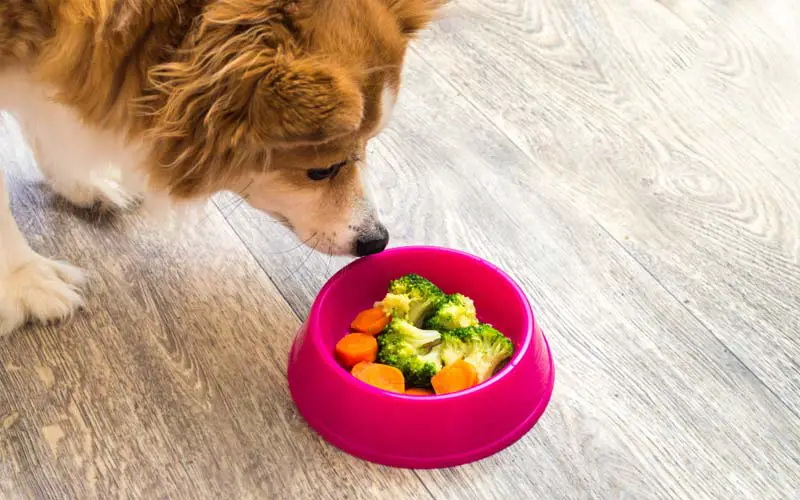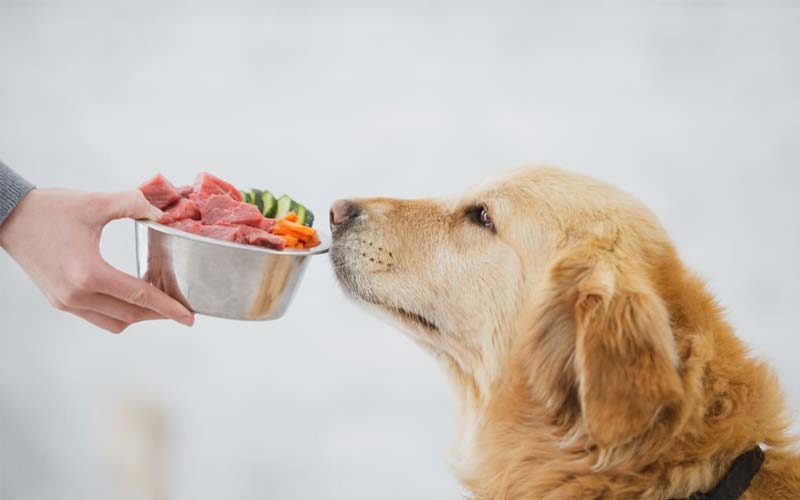A dog’s weight isn’t just a number—it’s a key indicator of their overall health and well-being. Just like humans, dogs can experience the negative effects of carrying extra pounds, from reduced mobility to serious health conditions like diabetes or heart disease. However, it’s not always easy to determine if your furry friend is overweight or simply stocky by nature.

Understanding whether your dog needs a diet involves more than a glance; it requires a thoughtful assessment of their physical condition, eating habits, and activity levels. In this article, we’ll explore how to recognize signs that your dog might need a dietary adjustment, explain why maintaining a healthy weight is essential, and offer practical steps for creating a plan that works for both you and your pet.
By the end, you’ll be equipped with the tools to ensure your dog stays fit, active, and healthy for years to come. Let’s dive in!
1. Why Maintaining a Healthy Weight Matters
Maintaining a healthy weight is crucial for your dog’s overall well-being. Excess weight puts unnecessary strain on a dog’s body, increasing the risk of serious health conditions. Obesity in dogs is linked to diabetes, which can cause lifelong complications, and arthritis, as excess weight places additional stress on joints, leading to pain and reduced mobility. Furthermore, overweight dogs are more prone to heart disease, which can significantly shorten their lifespan.
Beyond these health risks, obesity affects a dog’s quality of life. Dogs carrying extra weight often experience lower energy levels, making it difficult for them to enjoy activities like walks or playtime. In contrast, a dog at a healthy weight is more active, agile, and engaged, which contributes to their overall happiness and mental stimulation.
According to the Association for Pet Obesity Prevention, over 55% of dogs in the United States are classified as overweight or obese. This statistic highlights how common the issue is and underscores the importance of proactive weight management.
Keeping your dog at a healthy weight not only helps prevent chronic health conditions but also enhances their energy, mobility, and lifespan. It’s an investment in their long-term happiness and vitality.
2. Signs Your Dog May Need a Diet
Determining if your dog needs a diet starts with recognizing key physical, behavioral, and health-related signs that point to excess weight. Paying attention to these indicators can help you address potential issues before they impact your dog’s well-being.
Physical Indicators
- Difficulty Feeling Ribs: Run your hands along your dog’s sides. You should be able to feel their ribs with light pressure. If you can’t, your dog may have excess fat.
- Fat Deposits Around the Neck or Abdomen: Noticeable fat around these areas is a clear sign of overweight.
- Lack of a Visible Waistline: When viewed from above, your dog’s body should taper at the waist. A straight or rounded shape suggests excess weight.

Behavioral Changes
- Decreased Energy Levels: Dogs with extra weight often become lethargic, showing less interest in playing or exercising.
- Difficulty Climbing Stairs or Jumping: Struggles with basic movements may indicate that their weight is putting extra strain on their joints.
Health Symptoms
- Heavy Breathing or Overheating: Overweight dogs may pant excessively or overheat after minimal activity.
- Limping or Stiffness: Extra weight can exacerbate joint pain or lead to limping.
Self-Assessment Checklist
- Can you easily feel your dog’s ribs?
- Does your dog have a defined waistline?
- Is your dog active and energetic?
- Does your dog breathe comfortably after light activity?
If you answered “no” to any of these questions, it might be time to evaluate your dog’s diet and activity levels. Recognizing these signs early allows you to take actionable steps to improve your dog’s health and quality of life.
3. How to Assess Your Dog’s Weight Accurately
One of the most effective ways to evaluate your dog’s weight is by using the Body Condition Score (BCS) system. This scoring system rates a dog’s body condition on a scale from 1 to 9, where 1 indicates extreme thinness, 5 is ideal, and 9 represents severe obesity. To use the BCS, assess your dog’s physical features:
- Feel along their ribs; they should be palpable with a thin layer of fat.
- Check their waistline from above; it should be visibly narrower than the chest.
- Look at their side profile; there should be a gentle tuck at the abdomen.
In addition to the BCS, regular weigh-ins are essential. Use a home scale for smaller dogs or visit your veterinarian for larger breeds. Tracking their weight over time provides insight into any trends.
Finally, always consult a veterinarian for a professional evaluation. They can confirm whether your dog’s weight is healthy and recommend tailored solutions if adjustments are needed. A professional’s expertise ensures the most accurate assessment and the best care plan for your dog.

4. Reasons Dogs Gain Weight
Several factors can contribute to weight gain in dogs, often stemming from a combination of lifestyle and health-related issues.
Overfeeding or High-Calorie Treats
One of the most common causes of weight gain is overfeeding. Many owners inadvertently offer portion sizes that exceed their dog’s caloric needs. Additionally, frequent treats, especially those high in calories, can quickly add up and contribute to excess weight.
Lack of Exercise
Busy owner schedules or physical limitations can lead to insufficient exercise for dogs. Without adequate activity, dogs burn fewer calories, making it easy for them to gain weight, even if their diet remains consistent.
Health Conditions
Medical issues, such as hypothyroidism, can slow down a dog’s metabolism, making it harder to maintain a healthy weight. Similarly, age-related changes in metabolism can also lead to gradual weight gain.
The Importance of Portion Control and Balanced Nutrition
To prevent unnecessary weight gain, it’s vital to provide appropriate portion sizes and ensure your dog’s diet is nutritionally balanced. Measuring food accurately and limiting treats can make a significant difference in maintaining your dog’s ideal weight.
5. Steps to Help Your Dog Lose Weight Safely
Helping your dog lose weight requires a thoughtful, gradual approach to ensure their health and well-being throughout the process. Here are key steps to guide you in safely managing your dog’s weight loss.
Consult Your Veterinarian
Before making any changes to your dog’s diet or exercise routine, it’s essential to consult with your veterinarian. They can help determine your dog’s ideal weight and develop a customized diet plan based on their specific needs, health conditions, and activity level. A vet can also rule out underlying health issues contributing to weight gain.
Adjust Feeding Habits
- Transition to Low-Calorie Food: If your dog is overweight, consider switching to a weight-management or low-calorie dog food that is nutrient-dense but lower in calories.
- Measure Portions Accurately: Proper portion control is crucial. Follow the feeding guidelines on the dog food packaging or your vet’s recommendations, and use a measuring cup to avoid overfeeding.
Increase Physical Activity
Encouraging exercise is key to weight loss.
- Daily Walks: Regular walks will help burn calories and improve overall fitness.
- Interactive Toys: Puzzle toys or fetch games engage your dog mentally and physically.
- Low-Impact Exercises: Swimming is an excellent low-impact exercise for overweight dogs, helping them build muscle without stressing their joints.
Monitor Progress
Track your dog’s weight and behavior to ensure they are losing weight at a healthy, steady pace. Regular weigh-ins and noting changes in activity levels can help you adjust their plan as needed.
Avoid Common Pitfalls
Don’t make the mistake of over-restricting your dog’s food or following an inconsistent feeding schedule. Unbalanced diets or rapid weight loss can lead to nutritional deficiencies or muscle loss, so always prioritize gradual changes and balanced nutrition.

6. Preventing Weight Issues in the Future
The best way to manage your dog’s weight is by adopting healthy habits early on. For puppies or newly adopted dogs, establishing a balanced diet and regular exercise routine sets the foundation for a healthy life.
- Stick to a Consistent Feeding Schedule: Avoid free feeding, as it encourages overeating. Set specific feeding times to regulate your dog’s calorie intake.
- Regular Vet Check-Ups: Routine visits to the vet will help monitor your dog’s weight, overall health, and identify potential issues before they become serious.
By maintaining these practices, you can ensure your dog remains at a healthy weight throughout their life.
Conclusion: Does My Dog Need a Diet?
Maintaining a healthy weight is vital for your dog’s overall health and longevity. By recognizing the signs of excess weight, such as difficulty feeling ribs, decreased energy, or health issues like arthritis, you can take the necessary steps to help your dog achieve and maintain a healthy weight.
Consulting your veterinarian, adjusting your dog’s diet, increasing physical activity, and monitoring progress will ensure a safe and effective weight loss journey. Moreover, preventing weight issues in the future is possible by establishing healthy habits early, sticking to a consistent feeding schedule, and scheduling regular vet check-ups.
If you’ve noticed signs of weight gain in your dog, now is the time to take action. By making small, consistent changes, you’ll improve your dog’s quality of life and help them live a longer, healthier, and more active life.